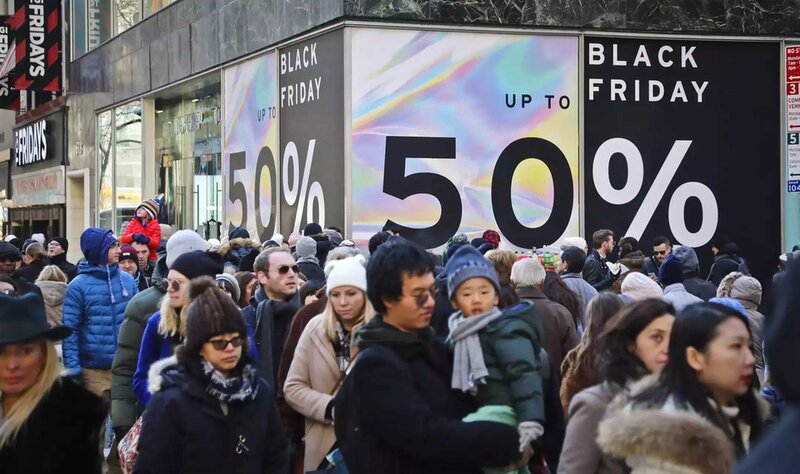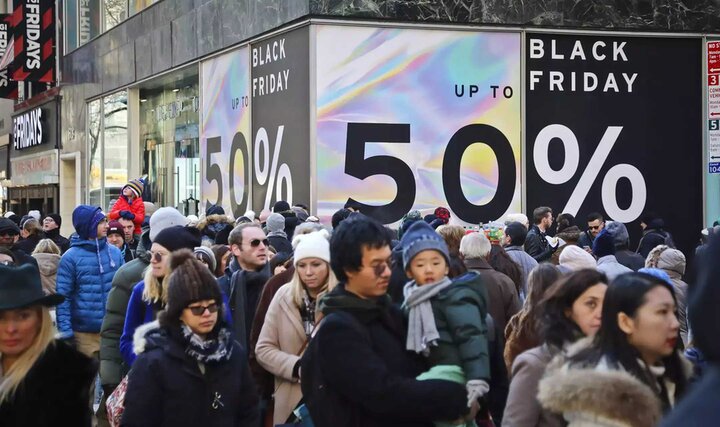

Black Friday Shopping: Is Your Digital Shelf Ready?
It’s no secret that Black Friday is the biggest shopping day of the year—basically the Super Bowl for retailers. Sales reached $9.8 billion in the U.S. last year and are expected to top $10 billion in 2024. Over the course of the entire five-day Thanksgiving weekend, a record 200 million people made purchases. And yet, the supercharged holiday shopping season is hardly limited to a single day, much less a single weekend. The weeks leading up to Christmas and New Year’s have shoppers pulling out their wallets frequently for both online and in-store purchases.
To prepare for Black Friday and beyond, holiday retailers must ensure their online shopping platforms are stocked and seamless. The holiday season holds tremendous potential, not just for a high volume of sales, but for retailers to build long-term customer relationships. With that in mind, let’s look at three steps retailers can take to ensure their digital shelf is ready for fast-paced, high-volume weeks ahead.
During the 2023 holiday season, in-store sales grew by just 1% year-over-year, while online sales grew by more than 6%, with the majority of online purchases (nearly 60%) made through a mobile device. If your company’s online shopping experience is not mobile-ready, you’re behind the curve. Retailers must ensure that all product images and details are optimized for mobile customers and that they can access features and zoom in on images from their smartphones.
Click-and-collect—a feature spurred by the pandemic—is also an increasingly popular option for shoppers. More than 34% of all consumers use the buy online, pick up in-store (BOPIS) method of shopping. In fact, BOPIS sales are projected to grow by 17% per year through 2030—a rate 43% faster than e-commerce as a whole. Retailers should embrace click-and-collect options, along with curbside delivery and parking lot pop-ups to meet customers where they are and offer immediate, easy access to their merchandise.
1. Know how people like to shop
The holiday season holds tremendous potential, not just for a high volume of sales, but for retailers to build long-term customer relationships.
- Natalie Scherer, Vice President of Performance Marketing, inriver


Mario Peshev is the CEO of DevriX, a global WordPress agency providing scalable, long-term technical partnerships along with marketing, and business consulting. Serving as a resource to retail and e-commerce entrepreneurs, Peshev is the author of the new bestselling Amazon book, MBA Disrupted: Your Step-By-Step Guide to Bootstrapping $1M+ Digital Businesses.
With online shopping, access to information is key —both from a consumer perspective and an internal one. Thus, ahead of Black Friday and the holiday shopping season, retailers should prioritize the accessibility of product information and reviews customers, and product inventory and pricing details to employees. A PIM solution is necessary in this regard.
Successful brands refresh their content during the holiday season to ensure that customers get real-time information on the items, sizing, shipping, and pick-up options. Additionally, making customer reviews easy to access can improve buyer confidence and trust. To take the customer experience to the next level, offering personalized experiences for shoppers and immersive buying experiences via AR/VR functionality can help improve conversion rates while also building long-term relationships. Altogether, the online shopping experience should be easy and engaging, with all product content accurate and optimized for each sales channel, including social media.
Internally, retailers must ensure that all necessary parties have access to critical information and functions to quickly address any changes to products or product information. This means centralizing product content, inventory, and pricing information to make it easily accessible for everyone who needs access.
2. Optimize and centralize product information

No matter how seamless and personalized the shopping experience is, customers will always inevitably return products. The average return rate for e-commerce across the board is about 30%. Making returns difficult for customers is a very harmful long-term strategy. To build enduring relationships even when an initial sale does not work out, retailers need a return policy and process that is easy and risk-free for customers.
While a 30-day return window is standard, a longer one can be appealing to shoppers. During the pandemic, for example, retailers that loosened their return policies saw an uptick in sales and a decrease in returns, suggesting shoppers appreciate flexibility and empathy.
Altogether, the holiday shopping season is extremely important for customers and retailers alike. To make the most of the upcoming rush, brands should be prepared for mobile browsing, click-and-collect, a high rate of returns, and everything in between. While it can be tempting to have holiday shopping tunnel vision, remember that every interaction you have with a customer lays the foundation for a long-term relationship. Thus, building trust and offering a seamless shopping experience will be beneficial even when the Black Friday rush is over.



